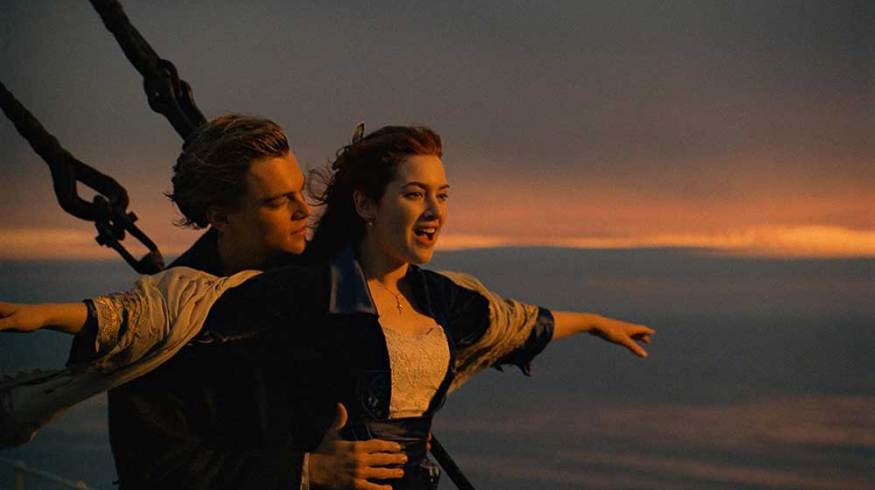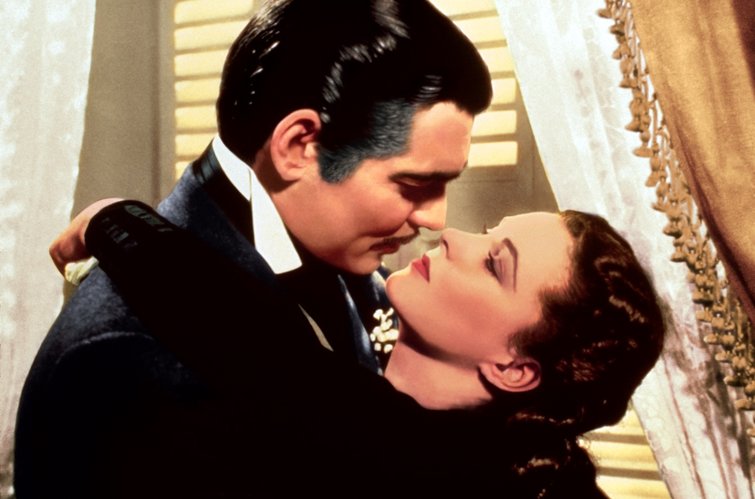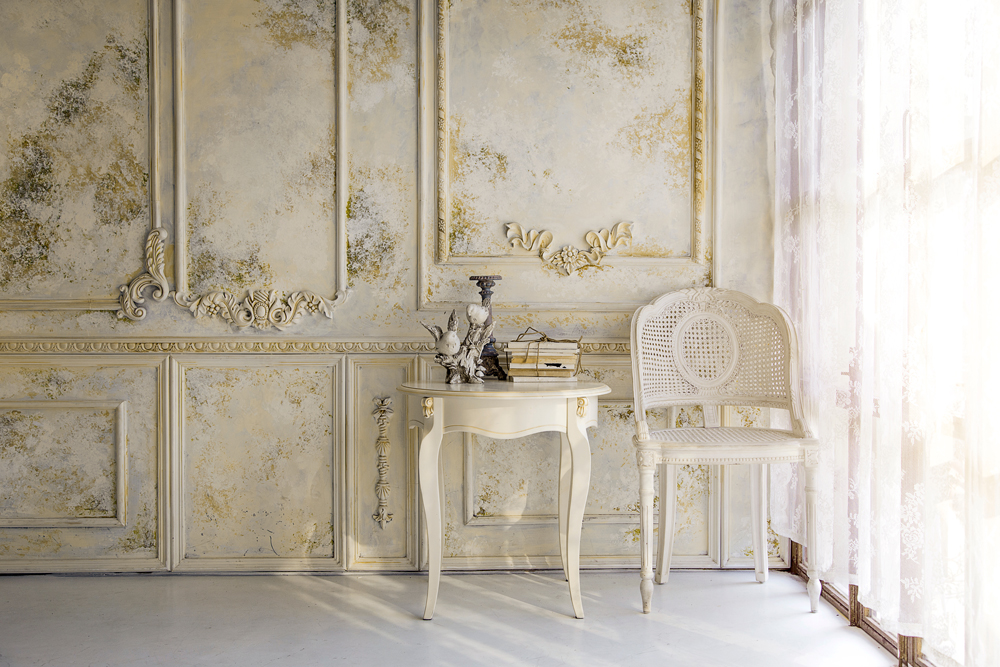
Genre Breakdown: The Different Types of Romance Films
Learn more about the romance film genre and the subgenres filmmakers use to tug at the heartstrings of audiences around the world.
Romance is everywhere; “Love really is, all-around” is probably one of the most famous romantic lines, thanks to the 2003 film Love Actually. Why? Because it is 100% true that there’s no escaping love. From restaurants to park benches, from beaches to the Eiffel Tower, you will find yourself unknowingly, and maybe for some of us, unwillingly, surrounded by romance even when we are blissfully unaware.
Romantic love is a natural part of everyday life, so it may be the genre with which filmmakers and audiences connect with the easiest. If this genre is naturally all around us, why not create a short film encapsulating love?
The influence of early romance film is so strong in cinema that one could argue that the vast majority of movies include many elements of these early romances. And while the genre has evolved over the years and hybridized with other genres—like drama and comedy—the basic tenets of chance encounters, heartfelt passion, and complex love triangles remain strong.
So, for those filmmakers looking to create romance films of their own, here are some basic romance film subgenres to study, incorporate and explore, along with some top tips to create a romantic feel.
Historical Romance

Tracing back through literature, many of the central themes of the romantic film genre appear in historical romance novels (also called “Epic” romance) by the likes of Sir Walter Scott, Honoré de Balzac, and Jane Austen.
Seen in stage plays, operas and all the way to modern film, these vast and epic historical tales have continued to hold romance as the main element of the stories, with notable examples including Gone with the Wind, Titanic, Doctor Zhivago, and the several iterations of Little Women (most recently brought to life by the brilliant Greta Gerwig in 2019.)
Research is key if you want to create an accurate historical romance. The era is normally an integral part of the storyline, so make sure you have read up on your history! This means that the time period will reflect how characters interact with each other and how the romance will unfold.
Hit up thrift stores for historical clothing and costumes that accurately depict your characters. Your script and story will depend on your chosen location and your ability to re-build a bygone era. We’ve explored this topic in depth and even have some low budget solutions for shooting a period piece.
If you’re on a budget, sticking to two or three different simple locations will help keep costs down. Adding a diffusor lens will typically allow you to diffuse and alter light if you wish to create a hazy look, which could complement your chosen historical era.
Good news! You can get diffusor lenses that are budget-friendly. Check out our article on diffusion filters to see if they could be a good fit for the mood you’re trying to set with your cinematography.
Color correction is also key to recreating a certain ear’s look. So, you can try out some free LUTs or even make custom grades using color grading software and plugins. Even some of the built-in features of popular NLEs will help you set the tone of your period-piece romance.
Regency Romance

Bridgerton is one of Netflix’s most popular Regency Romance shows. (Image via Evening Standard)
One of the most popular genres at the moment is Regency Romance, set in the period of the British Regency (1811-1820) or early 19th Century. Bridgerton has catapulted the Regency era onto our 21st-century screens, making it Netflix’s most successful English language show on an opening weekend.
The Recency Romance subgenre is known for its vibrant colors, elaborate garments, and charismatic characters. These factors all contribute to audiences falling quite literally in love with the romance.
If one wishes to create a regency-inspired romance, one needs to pay attention to the aesthetics and business of the short, flamboyant rise of the upper class. Head to an area dripping in beauty with lots of greenery and fairy-tale-like surroundings. Gardens and parks (permission permitting) are good places to start.
If you can’t make it to London, you can use stock footage to effortlessly provide your audience with establishing shots of stellar gardens, castles, and British countryside visuals.
Styling your interior is also key. A gorgeous chaise lounge adorned with lace and perched on an intricate rug can help create a romantic vibe with a touch of (upper) class.

Don’t forget to focus on color. Makeup with bold feminine hues will create a strong sense of female empowerment, along with vibrant and eclectic gowns. Pick colors that represent personalities and compliment your flirtatious script, and allow the love to flow!
Many of the same tips for the Historical Romance genre apply. Whether you choose Regency or another historical era to create your romance short, remember that Regency romances focus more on the dialogue and action to carry the storyline. Historical Romances tend to use the era as an integral part of the plot.
Romantic Drama

The romantic drama is one of the two prime subgenres of romance (the other being the romantic comedy, which we’ll discuss below). Romantic dramas are a more complex subgenre. Romantic dramas dive deeper into the conflicting emotions of romance and relationships, dealing with other issues like tribulations, death, separation, infidelity, and the introduction of love triangles.
Some famous romantic dramas include cinema classics like Casablanca, The English Patient, and Marriage Story, all of which complicate the eventual resolutions of their romantic dramas with the two stars ending up together (or apart) at the end.
Creating a romantic drama is all about the writing, so you’ll need a decent script to convey the characters’ emotions. If the script is good, you are onto a winner. Our tip for creating a compelling romantic drama is to pour your heart into the writing, specifically the dialogue.
Once your script is solid, there are limitless ways your film could play out. Some scripts will require multiple locations, while some can be shoot in one place.
As with any production, the more locations you decide to work with can make your film become more and more expensive. Check out these tips for finding low to no-budget locations. Romance dramas tend to be shot in a very straightforward fashion without much need for effects of special camera moves.
Romantic Comedy

On the other side of the genre, we have the highly popular subgenre known as the romantic comedy. Filmmakers and audiences alike discovered early on that laughter and love make great on-screen partners. So, rom-com quickly became one of the most popular film genres, launching the careers of many talented actors.
Classics in this genre include Clark Gable and Claudette Colbert in It Happened One Night to Marilyn Monroe, Tony Curtis, and Jack Lemmon in Some Like It Hot. Modern day examples include Kristen Wiig and Chris O’Dowd in Bridesmaids, Constance Wu and Henry Golding in Crazy Rich Asians, and the all-time-greatest full of stars, Love Actually.
We’ve complied a list of five things every romantic comedy needs. Just like with Romantic Dramas, the lovable Rom-Com also needs natural dialogue and a well-written script full of humor and light moments. Our biggest tip would be to make it as current as possible, using everyday romantic woes like adultery, social media, scandal, lack of intimacy, and texting breakups.
Another tip is to focus on the lighting; the hallmark of a good comedy is to make your talent pop with high-key lighting. As much as most DPs love the dark, gritty visuals that win awards, with this genre it’s also essential to master the brighter, happier side of cinematography.
High-key lighting—when the frame is well-lit and bright—can be a challenge, especially when you don’t want your actors to fall into shadow. Serial comedies, like Unbreakable Kimmy Schmidt, use high-key lighting to make their characters shine, portraying a somewhat idealized version of the world. Add bright colors to your background, set, and wardrobe to complete your portrayal of the ideal world.
Chick Flick

An offshoot of the romantic comedy, a new subgenre term emerged in modern film—the chick flick. This specific niche of romance films combines comedy, drama, and romance—often predominantly marketed toward women.
Many filmmakers and stars have found great success in the sensational plots and tear-jerker endings: Patrick Swayze and Jennifer Grey in Dirty Dancing, Ryan Gosling and Rachel McAdams in The Notebook, and Leonardo DiCaprio and Claire Danes in Romeo + Juliet.
Let’s go back to lenses, hues, and filters. Chick flicks all have this in common; they look dreamy. If you want to create a dreamy chick flick, investing in some diffusor lenses and filters may be a good idea. They’ll help you create the ideal romance visual by softening facial features and enhancing the romantic vibe. Check out our article on diffusion filters here.
Incorporating comedy and drama means you can play around with the lighting. Not all chick flicks have high lighting; just look at the image above taken from Dirty Dancing.
Chick flicks do, however, contain characters in love who were brought together by pretty unique circumstances, such as Julia Roberts and Richard Gere in Pretty Woman. A wealthy lawyer meeting a sex-worker in Downtown L.A? Perfect. Create a unique scenario, add some classic belters for those precisely-timed montages, and you’re on your way to writing a lovable chick flick!
Paranormal Romance

Finally, as with most mainstream and classic film genres, the hybridization of subgenres remains inevitable as filmmakers continue to find new and creative ways to cross romance film elements over into other genres. From romantic thrillers to fantasy and gothic romance, there are plenty to choose from, but one of the most fascinating is the rise in popularity of paranormal romance.
A sudden burst in the early 2000s of young adult stories, novel series, and film franchises reimagined the romance film as something darker-yet-still-friendly for a younger generation. Big examples include vampires in The Twilight Saga, zombies in Warm Bodies, and the supernatural in I Am Dragon.
If you are dead set on filming a paranormal romance on a budget, our top tip would be to focus on lighting, makeup, and location to transform this romance genre into the paranormal. Creating an “otherworldly feel” can be tricky—but not impossible.
- Choose your paranormal archetype (vampire/ghost etc.)
- Write a script that focuses on the romance being forbidden. Will the big reveal be that the love interest is actually a ghost?
- Represent the paranormal image using make-up, cold lighting, and hazy filters.
- Select an outdoor/indoor location during the appropriate season that can complement the struggles of the forbidden love (grand house/snowy mountains/forest etc.)
- For an extra slice of paranormal, why not utilize your filters and lighting to create flashbacks/precognition scenes?
Don’t forget that when you’re creating a short film, you can jump right into the action and choose to distill the essence (show the most significant part of the storyline.)
Cover image via Titanic (Paramount Pictures).
For more genre round-ups and filmmaking tips, check out some of these articles below.





